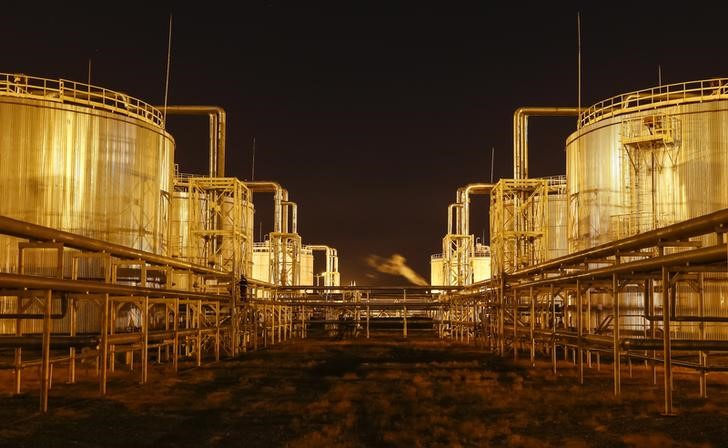Investing.com -- Crude oil prices rose Friday, on course for their sixth consecutive week of gains, after top producers Saudi Arabia and Russia extended their voluntary output cuts through September, further tightening global supplies.
By 09:20 ET (13:20 GMT), the U.S. crude futures traded 0.5% higher at $81.92 a barrel, while the Brent contract climbed 0.5% to $85.56.
Major producers extend production cuts
Saudi Arabia, the world's second largest crude producer, announced on Thursday that it would extend its oil production cut of 1 million barrels per day to the end of September while keeping the door open for another extension.
Russia, number three in the list behind the leading producer the U.S., also elected to reduce its oil exports by 300,000 barrels a day next month.
“Saudi Arabia’s crude oil production dropped to around 9.2MMbbls/d in July compared to around 10MMbbls/d in June 2023. The extension of output cuts means production could remain around 9MMbbls/d in the immediate term,” said analysts at ING, in a note.
OPEC meeting overshadowed
These announcements came before the Organization of the Petroleum Exporting Countries and allies, commonly known as OPEC+, got together to review the market.
The cartel decided not to announce any further changes to its overall output, with the move by the major producers designed to offset a potential downturn in demand this year, amid weak global economic conditions.
Evidence of this weakening came with the monthly U.S. jobs report, which saw 187,000 jobs added in July, fewer than expected, while the number of positions added in the previous two months was also revised lower.
This was a sign that a long-standing string of aggressive interest rate hikes by the Federal Reserve was weighing on the U.S. labor market.
Weekly streak of gains to continue
That said, the benchmarks are still on course for its longest streak of positive weeks this year, aided by U.S. inventories logging a substantially bigger-than-expected draw for the past week, of over 17 million barrels. The reading was the biggest draw seen in data dating back to 1982 and showed that oil supplies in the world’s largest consumer were tightening.
(Ambar Warrick contributed to this article.)
